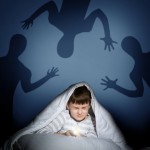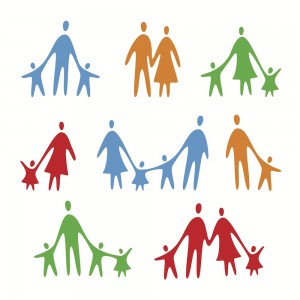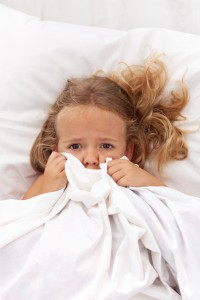
I was a terrible sleeper as a child. I remember lying awake on one particular occasion because I had read a book about space and thought that the sun might swallow up the earth.
I was intrigued then, when I was asked to review a paper for the Mental Elf about parasomnias and childhood psychotic experiences. I confess that I did not know what parasomnias were, but it turns out that they include nightmares, sleepwalking and night terrors: relatively common sleep problems or disorders.
A small literature exists that suggests that parasomnias may be associated with childhood psychotic experiences and perhaps also with psychosis in adulthood. Previous studies have been hampered by methodological limitations including small sample size, reliance on self-report measures and convenience samples.
Previous research has highlighted that non-clinical psychotic symptoms occur in a significant proportion of 12-year-olds and that these symptoms are associated with low IQ and also less strongly with a high IQ score (Horwood et al, 2008). The present paper (Fisher et al, 2013) used a large birth cohort to investigate whether common parasomnias were associated with psychotic experiences when children were 12 years old.
Methods
Fisher et al. used data from the Avon Longitudinal Study of Parents and Children (ALSPAC). This is a birth cohort study examining development, health, and disease more generally. 14,775 children made up the overall population of the ALSPAC study.
Parents completed postal questionnaires about the children from pregnancy onwards, and children attended annual assessment clinics from age 7 years onwards.
Analysis in the current study was based on the 6,796 children who completed the Psychosis-Like Symptoms Semi-Structured Interview (PLIKSi) at age 12 years. The PLIKSi instrument includes 12 core items that cover hallucinations, delusions and experience of thought interference over the period of six months prior to interview.
Two outcome variables were considered:
- One or more of the 12 PLIKSi experiences present including those attributable to sleep, fever or substance use
- One or more of the 12 PLIKSi experiences present not attributable to sleep, fever or substance use
Predictor variables were sleep problems during pre-school or school. Mothers were asked specifically about:
- Nightmares
- Sleep onset problems
- Night waking
Sleep problems at age 12 years old were assessed via interview with the child. The children were asked about nightmares, night terrors and sleepwalking during the 6 months prior to interview. Interviews were based on DSM-IV criteria for sleep disorders.
Potential confounding variables were assessed appropriately.
Binary logistic regression was used to examine whether persistence of nightmares or any of the specific parasomnias were associated with psychotic experiences at age 12.

The researchers gathered data from both parents (via questionnaires from pregnancy onwards) and children (via annual assessment clinics from age 7) to include in their analysis
Results
Those who did not complete the PLIKSi at age 12 tended to be “nonwhite boys born to single mothers of lower educational level from families living in rented properties”. The authors repeated the analysis with data weighted to account for this selective dropout. Results were not substantially different.
At age 12:
- 24% of children reported nightmares in the previous 6 months
- 9% reported night terrors
- 13% reported sleepwalking
- 36% reported at least one type of parasomnia
Persistent nightmares during preschool and school periods were associated with psychotic experiences at age 12.
No associations were found between other persistent sleep problems during childhood and psychotic experiences at age 12.
There were associations between “any parasomnias”, nightmares and night terrors reported at age 12 and psychotic experiences at age 12. The association between sleepwalking and psychotic experiences was not statistically significant when confounding variables were added to the model.
Reports of persistent nightmares during the preschool and school years were predictive of each type of parasomnia at age 12.

Persistent nightmares during preschool and school periods were associated with psychotic experiences at age 12
Discussion
The authors of the study suggest that there may be several possible mechanisms that could explain the associations that they found between parasomnias and psychotic experiences. As a clinical psychologist I find (2) a particularly interesting hypothesis.
- The boundaries between asleep and awake may be too flexible in certain people. REM sleep may occur while they are awake, resulting in the experience of an hallucination
- Traumatic experiences in childhood often result in nightmares. They may also contribute to psychotic experiences. The authors suggest that further research is needed to explore this possibility
- Dissociation could underlie the associations between parasomnias and psychotic experiences
Limitations and strengths
The authors note several limitations of the study including:
- Selective dropout, which may have biased the results
- Of the parasomnias, only nightmares were assessed from preschool age. There was no data pertaining to the frequency of nightmares
- Reports of night terrors and sleepwalking were obtained at the same time as the interview in respect of psychotic experiences. No conclusions can be drawn about cause and effect
- That “the findings could be due to the presence of post-traumatic stress disorder in the children”. The authors discounted this as only one child had been diagnosed with PTSD in the cohort but it is an interesting hypothesis
The authors’ criticisms of their own study are pretty exhaustive and in general I thought it was an interesting paper with some notable strengths. It is a fairly large prospective study and the authors seem to have kept an open mind in relation to the mechanisms underlying their results.
However, in their last paragraph they state that “the estimated population attributable fraction indicated that eliminating persistent nightmares might prevent 13% of children with psychotic experiences from developing them. This level of attributable fraction appears small but is considerable”. They state this a bit more tentatively in the next paragraph but I think that there is an assumption of causation here when only an association has been found.
I agree with the authors that it might be helpful to ask children experiencing parasomnias about the presence of psychotic experiences.
It would also be interesting to find out how many of these children are diagnosed with psychosis later in life.
Links
Fisher HL et al. Childhood parasomnias and psychotic experiences at age 12 years in a United Kingdom birth cohort. Sleep 2014: 37; 3 doi: 10.5665/sleep.3478
Horwood J, Salvi G, Thomas K, Duffy L, Gunnell D, Hollis C, Lewis G, Menezes P, Thompson A, Wolke D, Zammit S, Harrison G. IQ and non-clinical psychotic symptoms in 12-year-olds: results from the ALSPAC birth cohort. Br J Psychiatry. 2008 Sep;193(3):185-91. doi: 10.1192/bjp.bp.108.051904.


@To_ka1987 Wel een verband tussen nachtmerries en psychotische belevingen tegengekomen… http://t.co/0sYw64KGw3
Childhood nightmares, night terrors, sleepwalking and psychotic experiences: I was a terrible sleeper as a chi… http://t.co/XMcbV6i3kz
“@Mental_Elf: Childhood nightmares, night terrors, sleepwalking and psychotic experiences http://t.co/ycXYs0JXMG Children have magical minds
Today @JoeJudgePsy reviews a new UK cohort study of childhood parasomnias and psychotic experiences at age 12 http://t.co/1cVY9OTXEz
My latest blog for @Mental_Elf on childhood psychotic experiences and nightmares — http://t.co/8wjXSgqYgp
@JoeJudgePsy @Mental_Elf do you have a specific interest in psychosis? Do you know of multiple siblings experiencing it?
Mental Elf: Childhood nightmares, night terrors, sleepwalking and psychotic experiences http://t.co/JuSyb91xPv
Sleep problems and psychosis: emerging evidence suggests a link http://t.co/1cVY9OTXEz
@Mental_Elf I have both!
“@Mental_Elf: Sleep problems and psychosis: emerging evidence suggests a link http://t.co/yKWTN9T378” @simon_rosenbaum need to run that RCT!
Nightmares, sleepwalking and childhood psychotic experiences – http://t.co/8wjXSgqYgp – my latest blog for @Mental_Elf
“@Mental_Elf: Childhood nightmares, night terrors, sleepwalking and psychotic experiences http://t.co/fkbCTFdwLX” Que opina @conicaneo ?
Interesante la hipótesis. Aporte teórico pero, utilidad clínica? Habra q leer mas @daceituno @Mental_Elf
Childhood nightmares, night terrors, sleepwalking and psychotic experiences http://t.co/4GLAAvOkIa by @JoeJudgePsy
RT @Mental_Elf: Don’t miss: Childhood nightmares, night terrors, sleepwalking and psychotic experiences http://t.co/1cVY9OTXEz
Childhood nightmares, night terrors, sleepwalking and psychotic experiences http://t.co/VvAnWqCBKm @rubycabernet
Parasomnia and psychosis in children… http://t.co/F4VvgJpxSq
RT @Mental_Elf: Persistent nightmares during preschool and school periods are associated with psychotic experiences at age 12 http://t.co/1…